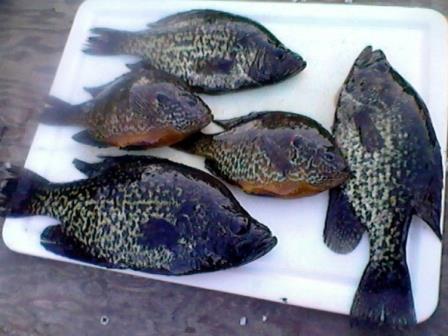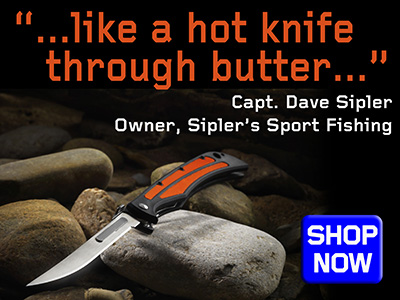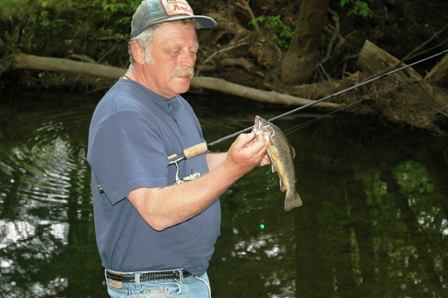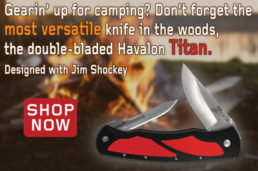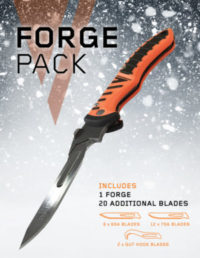Get out of that he-man-woman-hater’s club
5 Reasons We Need Women Hunters
By Steve Sorensen
If you and your hunting buddies frown upon female hunters, maybe you’re living in the 1900s. Hunting camps are no longer he-man-woman-haters-clubs, if they ever were. In most of America today women have gained equality with men. Yes, even in the traditionally male world of hunters. Women are now the fastest growing segment of the hunting population.
This isn’t a man’s world
In the coyote den, it’s not just the male that leaves to hunt while the female nurtures their young. In the eagle’s nest, it’s not just the male that brings food back for the eaglets. Even your pampered cat, though she may be spayed and spend most of her time indoors, will lay that songbird on your doorstep expecting praise for her hunting prowess.
If that’s not enough to help you realize the mistake of thinking hunting is a man’s world, here are four more reasons why we need women in the world of hunting.

1. To Connect to the Romance
Romance is not just flowers and chocolate. Romance is “a quality or feeling of mystery, excitement, and remoteness from everyday life.” That goes a long way to describe hunting. That’s one of the outdoorsman’s biggest thrills. Why not give a woman that same connection with wildlife? Like my friend Dick, who took Audrey hunting. After an hour on an archery stand Audrey called to tell Dick, “I shot a deer.” He replied, “Great! I’ll be right over to help you field dress it.” She answered, “No need. I already did that.” Dick said, “Good! I’ll help you drag it.” Audrey said, “I already dragged it up to the four-wheeler.” Dick found a soulmate.
A woman who spends time in the woods with you will not only understand you better, she will also see what draws you to special places where you interact with the natural world. She, like you, will gravitate to those places of mystery, excitement, and remoteness. That’s romance.
2. To Kill the Stereotypes
Back in junior high school teachers held assemblies to teach us we shouldn’t stereotype other people. We learned to erase the distinction between “male” and “female” careers. Now we’re comfortable with men as nurses and social workers. We accept female physicians and attorneys.
It’s time we kill the stereotypes in hunting, too. There was a time when advertisers began using women as eye-candy for a male-dominated arena. Then companies saw a market and started making camo with pink trim. Now women defy stereotypes. Like Sister John Paul Bauer, a retired Navy veteran who became a Roman Catholic nun and started hunting. Last deer season she was in the midst of a Facebook firefight when critics around the world harassed her for shooting a nice 10-point buck. Many of them considered themselves liberal, but there’s nothing liberal about condemning a woman who breaks a stereotype.

3. To Listen to Their Voices
Advertising messages are repeated over and over. We often ignore them, but we begin to pay attention when we’re in the market for a new car, or a new insurance policy. Have you noticed who the voices of wisdom are in those little household vignettes advertisers use? Often they are the voices of strong, intelligent women. Like Vikki Trout, an outdoor writer and photographer, who continues to speak out for hunting even after tragically losing her husband John to cancer.
Vikki writes for the outdoor magazines, sells photos of wildlife, and introduces new people to hunting. She’s an effective ambassador for hunting with a consistent, life-changing, pro-hunting voice. So if more and more positive voices representing hunting come from strong, intelligent women, people won’t see hunting as the blood sport of Neanderthal men.

4. To Win the Public Relations War
Today’s colleges have more female than male students, and more women are finding their places as corporate executives. We even see more women at construction sites. Women are finding out it’s OK to be hunters, too. In my home state of Pennsylvania, the ranks of licensed female hunters grew by more than 40% over the last seven years.
We’ll win a public relations triumph when the multiplying ranks of women hunters help convince the public that hunters play an important role in wildlife management, even that hunters – both male and female – are the key to abundant wildlife in North America. A lot is riding on this because the public is made up of many non-hunters who need to be convinced of the value of hunting. In fact, if we don’t win this public relations war, and the public mistakenly decides hunters are bad for wildlife, then hunting will see its last days.
5. To Reverse the Decline
It’s no secret that hunters’ numbers are declining. Enlisting more boys in hunting won’t produce the numbers it once did because smaller families mean the pool of boys is smaller. Many families are no longer headed by men, so Dad isn’t around to take Junior hunting. And we’ve shifted to a more urban society, so fewer families live in rural settings where hunting is an everyday part of the culture.
Introducing more women to hunting and the outdoors is the best way to reverse the decline. Every time a woman hunts, the world gets a new role model for young boys and young girls too.
Want More?
There you have it – five reasons we need women hunters. Want more? In the ongoing struggle to continue financing wildlife management, we need women. To continue as a political force for the right to bear arms, we need women. Women will help us overcome the tendency of the public to see wildlife management through an emotional lens, and to see hunting for what it is – food acquisition, camaraderie in the field, teaching others about the natural world, providing room in the habitat for the coming generations of wildlife, and changing the public perception of hunting from a consumer mentality to a caring-for-nature mentality. If those messages come from women and not just men, the public will listen and women will no longer be seen as exceptions in a world of male hunters.
In a nation that strives for equal pay for equal work and female participation in the armed forces, should anyone be surprised that more women are finding their places in blinds and treestands? Let’s welcome them, for the sake of hunting and for the sake of wildlife.
***

Steve Sorensen is the author of Growing Up With Guns, and The Everyday Hunter Handbook Series. He also writes an award-winning newspaper column called The Everyday Hunter®, and edits content for the Havalon Nation. He has published articles in top magazines across the USA, and won the 2015 “Pinnacle” Award for magazine writing. Invite Steve to speak at your next sportsman’s event, and follow him at www.EverydayHunter.com.
5,616 total views, no views today
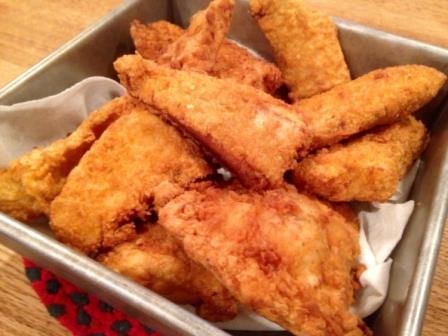
 Tracy L. Schmidt is a certified master food preservation specialist and the author of the book “Venison Wisdom.” Each of her recipes is tested and perfected. She is married to Daniel Schmidt, editor in chief of Deer & Deer Hunting magazine and host of “Deer & Deer Hunting TV” on NBC Sports. Tracy enjoys the versatility of Havalon Knives in both the kitchen and the field.
Tracy L. Schmidt is a certified master food preservation specialist and the author of the book “Venison Wisdom.” Each of her recipes is tested and perfected. She is married to Daniel Schmidt, editor in chief of Deer & Deer Hunting magazine and host of “Deer & Deer Hunting TV” on NBC Sports. Tracy enjoys the versatility of Havalon Knives in both the kitchen and the field.


